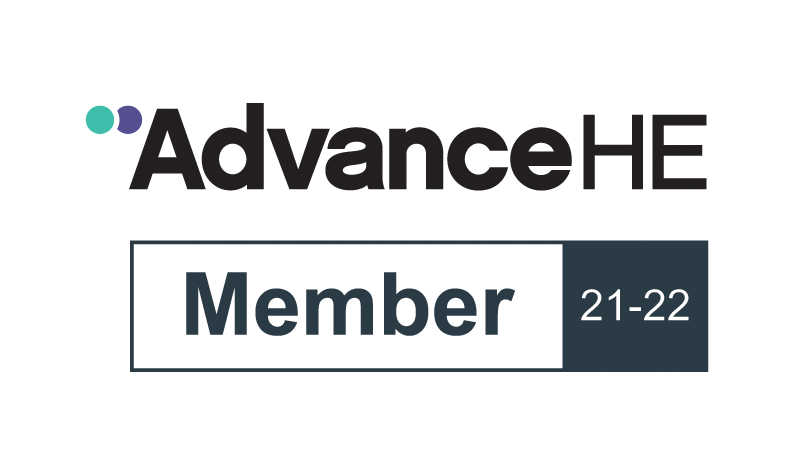
The goal of Fife College’s Supported Learning team is to showcase our students’ abilities over their disabilities.
As a team, we strive to empower our students with the skills to access the wider college environment and fulfil their potential. To do this, we have looked to utilise advances in assistive technologies (AT). Over the last year, the team has worked to incorporate more course work onto the iLearn and ePortfolio platforms that college students use to support and facilitate their studies.
All potential full-time college students for Supported Learning undertake a yearlong part-time programme called New Directions while they are still at school. During this time, the team look to upskill and promote independence by teaching pupils about assistive technology.
The rationale behind the move towards increased use of virtual learning environments is that it can encourage inclusion and promote greater independence in our students who need support with their learning.
By empowering students with the technology they need to be able to increase their own knowledge of their subjects, the team is also promoting inclusion and providing students with skills for learning and life, whilst building self-efficacy.
The Supported Learning team at Fife College feels that, by training our School College Partnership students in AT while they are still at school on the New Directions course, and before they enrol full-time at the College, we can empower the students to be more rounded, confident individuals, and more successful learners when they become full-time college students.
Instructing the students in AT reduces the stigma of having to have a reader or scribe within the class, and provides skills for home and work.
The New Directions course’s AT unit was designed to promote inclusion and independence for all students. The purpose of the unit was to train students in all areas of AT that they could potentially need when they become full-time students – be that on mainstream or supported college courses.
It has been demonstrably seen that, once learners have undertaken the AT unit, they have taken it upon themselves to ‘investigate’ the software further, beyond the basic uses explored in class.
The team has received positive feedback from learners and has seen this unit promote confidence and help to remove barriers to learning for many students. In turn, this helps the students with their confidence and has made the difference in a transition to full-time study at the College being successful or not, while also promoting equality and inclusiveness.
Some feedback on, and praise for, the AT that was made available to the students included the following. The feedback has been overwhelmingly positive:
- “I can now access my course work at home and in college by myself”
- “I can add my course notes to my MP3 and listen to them on the way home”
- “I can evidence my portfolio by myself”
- “I can now have my work read to me by the PC”
What does the AT unit consists of?
The unit is taught for twelve weeks and is tutor led. The students get to work through the module at their own pace with guidance in the form or workbooks, video instructions, and tutor support throughout.
The unit is broken up with interactive games, such as a ‘catchphrase’-style game that was developed using the picture dictionary facility on the toolbar within the AT. The game works as follows: students think of a phrase – such as “it’s raining cats and dogs” – and then, using the picture dictionary, they create the phrase with the available images. These images are shown to the rest of the class who in turn have to guess what the phrase is.
This task has proven to be a lot of fun for the students, and promotes self-directed study. The game has been seen to motivate the students to explore what else the AT toolbar can do both in and out of the classroom.
AT has proved to be such a successful unit with New Directions transition students that the Supported Learning team has now rolled it out to all full-time students within the curriculum area, so that everyone in the department can benefit.
Going forward, it is hoped that, once a student has completed the New Directions course, they will only need a refresher course on AT at the start of their full-time college careers.
Moreover, all of the students who complete the AT unit are then able to use the skills and experiences they have gained to complete learning outcomes in other units on the New Directions course, such as “using multimedia applications” (F7HA08).
What have the staff noticed?
Much like their students, the staff that have been involved with the AT unit as part of the New Directions course have also provided unanimously positive and supportive feedback for the technology. Their comments include:
- “The students are able to be far more independent with AT”
- “I don’t have to sit with my student and read everything to him, he’s happy to use AT”
- “I am only needed to do a final proofread of the students’ work”
At Fife College, all students are encouraged to visit the Student Learning Hub, where personal help and access to assistive technology is available to aid learning and provide equality and inclusion to all.
Since the Supported Learning team has introduced the AT project, the College has seen an increase in students progressing onto mainstream course. These courses include: computing studies, hospitality, business, and tourism to name only a few.
The students continue to use the AT that they learned how to operate on their New Directions course and, with ongoing help and support from the College’s Inclusion team, we are starting to see the students become successful at both National 5 and Higher level.
Welcoming successes and moving forward
The AT unit introduced to the New Directions School College Partnership course has been seen to promote inclusion, independent learning, and confidence within students.
The easy to read and understand manual and workbook assist this. In using the manual, students can help themselves to remove barriers to their learning and assessment, giving them responsibility for their own learning, and allowing for more successful progression to full-time, mainstream college courses at SCQF levels 5 and 6.
AT then continues to support the students in their learning as they continue their college careers, enabling them to develop more knowledge and independent study skills than they otherwise would have.
It is hoped that this will, in turn, lead to better employment prospects and general life skills for the students.



